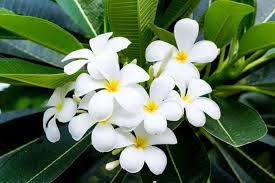**Porcelain Flowers: Their Natural Habitat and Environmental Conditions**

Porcelain flowers, also known as Hoya plants, are renowned for their exquisite blooms and resilient nature. Originating from tropical and subtropical regions, these plants thrive in diverse environments and exhibit unique adaptations that enable them to flourish in both natural habitats and cultivated settings.
1. **Native Habitat**: Hoya plants are indigenous to regions spanning from Southeast Asia to Australia, where they inhabit a variety of ecosystems, including tropical rainforests, subtropical woodlands, and coastal areas. They are often found growing as epiphytes, clinging to trees and rock faces, or as lithophytes, growing on rocky substrates. Their natural range encompasses countries such as Thailand, Indonesia, Malaysia, the Philippines, and parts of Australia.
2. **Growing Conditions**: In their native habitats, Hoya plants prefer warm and humid conditions with dappled sunlight and well-draining soil. They thrive in sheltered locations with adequate airflow and moderate humidity levels. These plants are adapted to variable light conditions, with some species thriving in bright indirect light, while others prefer partial shade. Additionally, they require occasional watering and regular fertilization during the growing season to support healthy growth and blooming.
3. **Epiphytic Adaptations**: Hoya plants possess several adaptations that allow them to thrive as epiphytes in their natural habitats. Their thick, succulent leaves help them retain moisture during periods of drought, while specialized roots called adventitious roots enable them to anchor onto tree branches or rocky surfaces and absorb nutrients and water from the air. These adaptive traits allow Hoya plants to survive in environments where soil is scarce and rainfall is intermittent.
4. **Biodiversity Support**: In their native habitats, Hoya plants contribute to biodiversity by providing habitat and food sources for a variety of organisms. Their nectar-rich flowers attract pollinators such as bees, butterflies, and moths, while their foliage provides shelter for small animals and insects. Additionally, Hoya plants play a role in nutrient cycling and soil stabilization, enhancing the overall ecological health of their native ecosystems.
5. **Conservation Status**: While many species of Hoya plants are widespread and abundant in their native habitats, some are threatened by habitat loss, deforestation, and illegal collection for the horticultural trade. Several conservation initiatives and botanical gardens work to preserve and protect endangered species of Hoya plants through habitat restoration, propagation, and public education efforts.
In summary, Hoya plants are fascinating botanical specimens that thrive in diverse natural environments, from tropical rainforests to subtropical woodlands. Their unique adaptations and ecological importance make them valuable components of their native ecosystems, while their beauty and resilience have made them popular additions to indoor gardens and horticultural collections worldwide.
**Hoya Plants and Their Natural Habitat**
Hoya plants, commonly referred to as porcelain flowers, are renowned for their captivating blooms and adaptability to various natural environments. Understanding their native habitat provides insight into their unique characteristics and requirements for cultivation.
1. **Tropical and Subtropical Regions**: Hoya plants are native to tropical and subtropical regions, predominantly found in countries across Southeast Asia, including Thailand, Indonesia, Malaysia, and the Philippines. They also thrive in parts of Australia, particularly in Queensland. These regions boast warm temperatures, high humidity levels, and abundant rainfall, creating ideal conditions for Hoya plants to flourish.
2. **Epiphytic Growth**: Many Hoya species are epiphytes, meaning they grow on other plants, such as trees, without parasitizing them. In their natural habitat, Hoya plants can be observed clinging to tree branches, trunks, or rocky outcrops. Their aerial roots absorb moisture and nutrients from the air and organic debris that accumulates around them, enabling them to thrive in environments where soil is limited or absent.
3. **Diverse Ecosystems**: Hoya plants inhabit a range of ecosystems within their native regions, including tropical rainforests, montane forests, coastal scrublands, and limestone karsts. Each habitat presents unique environmental conditions, from dense canopy cover and high humidity in rainforests to exposed rocky surfaces and variable moisture levels in limestone karsts. Despite these differences, Hoya plants have evolved to adapt to diverse ecological niches.
4. **Pollination and Reproduction**: In their natural habitat, Hoya plants rely on pollinators such as bees, moths, and butterflies to facilitate reproduction. The intricate structures of their flowers, including specialized corona appendages and fragrant nectar, attract pollinators seeking food and shelter. Cross-pollination between individual plants contributes to genetic diversity and ensures the continued survival of Hoya populations in their native ecosystems.
5. **Conservation Challenges**: While Hoya plants are not typically considered endangered, certain species may face threats due to habitat loss, deforestation, and illegal collection for the horticultural trade. Conservation efforts aimed at preserving their natural habitat and protecting biodiversity are essential for safeguarding the long-term viability of Hoya populations and the ecosystems they inhabit.
Understanding the natural habitat of Hoya plants provides valuable insights into their care and cultivation requirements. By replicating their native environmental conditions, enthusiasts can successfully grow and appreciate these captivating botanical treasures in home gardens and indoor spaces, while also contributing to conservation efforts aimed at preserving their natural habitat.

